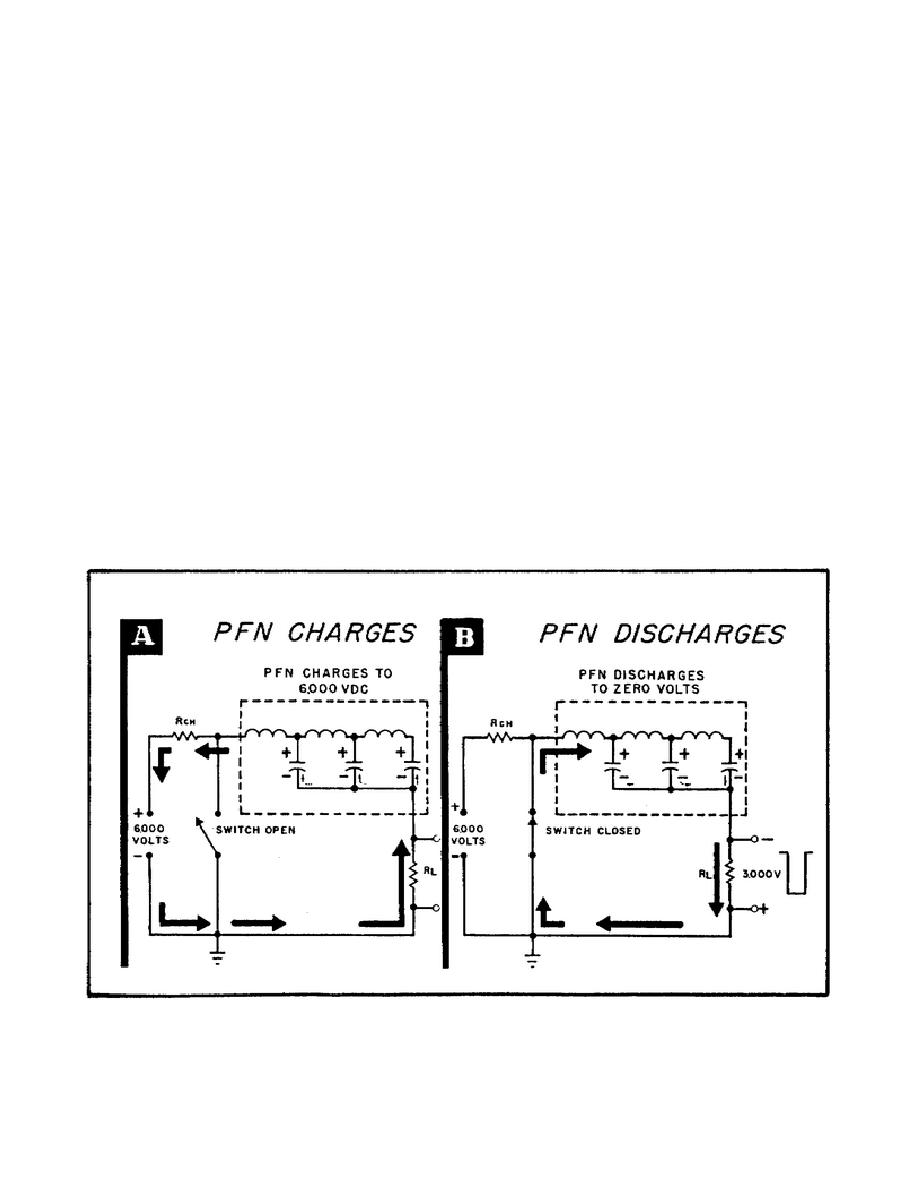
Learning Event 3:
THE PFN
1. Figure 54 shows that the PFN is an ATL. Recall from a previous lesson,
Artificial Transmission Lines, that one of the major uses of ATL is to form
radar pulses.
You learned that the ATL determines the pulse width and
shape. At this time, you should review the previous lesson concerning basic
principles of ATL.
Note carefully those sections dealing with the
following:
a. The charge of an ATL through a source resistance (Rch) greater than
the characteristic resistance (Rc) of the ATL.
b. The discharge of an ATL through a load resistance (RL) equal to the
characteristic resistance of the ATL.
2. Now look at Figure 54 again. Part A shows a simplified schematic of the
charging circuit of the modulator.
The high-voltage power supply charges
the PFN to 6,000 volts DC through the charging impedance. In this case, the
charging impedance is a resistor, called the charging resistance Rch. The
characteristic resistance (Rc) of the line is less than the source and
charging resistances.
Therefore, the PFN charges exponentially to the
source voltage of 6,000 volts DC. No pulse is formed across the load during
the charge cycle because the impedance of the load (magnetron and its pulse
transformer) is very low and the charge time is very long.
Figure 54.
Charge and Discharge of the PFN.
66



 Previous Page
Previous Page
